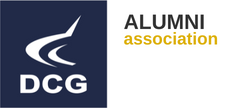Landing pages are big business. Essentially, a landing page is where a visitor first ‘lands’ when they click on a link to your website from another location. The purpose of a landing page is to swiftly capitalise on the interest that has been generated and turn the visitor into a customer as soon as possible.
Your landing page could be your homepage, or more likely, a stand-alone page created specifically to generate conversion for a particular marketing or social media campaign.
Whatever action you want your customers to take when they arrive on your landing page, the following elements are often included:
- A headline
- Your features and benefits
- Your call-to-action
- Your credibility and social proof
- Your risk reversal
Here are our tips for maximising the effectiveness of these elements.
Headline
The purpose of a headline is to grab the reader’s attention and get them to read the rest of the landing page.
An effective headline will trigger one or more of the following reactions in your potential customer:
- Curiosity: “Find out how you can save £££s”
- Fear: “We can help you prepare your family for the worst”
- Pain: “Fed up of spending hours trying to create a website?”
- Convenience: “An easy way to do your weekly shop”
- Greed: “Make money from your car parking space while you’re at work”
- Pride, Power, Ego: “Have the greenest lawn on your street”
- Assurance: “Results in 30 days or your money back”
- Anger “You’re being cheated by your airline. We can help”
There are many ways to write a headline that triggers one of these outcomes, however there is a trick you can use if you’re in need of inspiration – use this formula:
End result + Time + objections
Example: A brand new organic bamboo toothbrush delivered to your door every month without fail, or a years supply for free.” OR
Incredible VR technology straight from your phone, without the high cost of a bulky headset.
Features and benefits
Features and benefits may sound similar, but on a landing page they have completely different effects on your potential customers.
There’s a famous phrase in sales – ‘features tell, benefits sell.’ Your customers want to know how your product will solve their problem or give them the results they want – talking about benefits before features helps to target their emotions.
Feature – something your product has, or is. The material it’s made from, a technical specification or an amount of something.
Benefit – outcome or results your customers will experience as a result of the features. It helps to make them specific, real and tangible.
Here are some examples:
| Feature | Benefit |
| Integrated email app | You can check your email anywhere |
| Open 24 hours | You can shop whenever you need to |
| An artificial intelligence algorithm | It learns to adapt to your needs |
| Leggings with shaping lycra panels | Leggings that make you look good while you work out |
| Four wheel drive | Suitable for all terrains |
Once you’ve reeled in your customers with the benefits your product or service can bring to them, you can then demonstrate how, by listing the features.
Credibility and social proof
Some of the most effective ways of proving your worth to customers are through:
- Testimonials and endorsements from genuine customers
- Positive press coverage
- Statistics (e.g. the number of positive reviews on ratings sites such as Trustpilot or TripAdvisor)
- Social media stats (likes, follows, views and so on.)
- Any other evidence you have that your existing and previous customers loved your product and were able to reap the benefits.
Easy ways to do this include:
- Using a testimonial section on your landing page with quotes and reviews from satisfied customers
- Reserve a section of your landing page for a short quote from a recent newspaper article about your product
- Use a statistic showing the effectiveness of your service as a sub-heading
Risk reversal
Including risk reversal on your landing page basically means that the customer has a get-out clause. It takes away the risk of them giving your product a try. A risk reversal can be anything from offering free returns or a 30-day money-back guarantee, or even reassuring them that their time is not at risk by saying something like it ‘takes just 5 minutes to set up.’
Including these elements in your landing page serves to take your potential customers on a journey from discovery to sale, starting with an attention-grabbing headline, reeling them in and eventually putting any last niggling doubts at ease.

